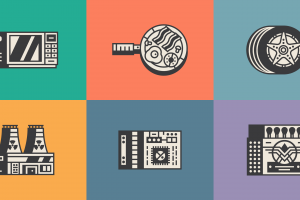One of the most unexpected ways that modern technology has influenced the present is in the way that it’s helped to revive the past. Whether through using technology to recover ancient artifacts or depicting ancient histories and cultures in digital games, these are both methods of reviving and immortalising the past that help to expand our knowledge of previous civilizations.
Bringing Past Cultures to Life
A good example of how this works can be seen when we enter a UK casino online. There are many slots based on ancient cultures, including titles such as Shrine of Anubis and Gifts of Ra that take us back to the days of the pharaohs in Ancient Egypt. Other cultures represented here include Rome and Greece, while the 1001 Arabian Nights slot is based on classic folk tales from the Middle East.
In these games, the symbols used as often based on classic images that have popped up in movies and TV shows but that maybe not everyone is aware of the origins of. Therefore, this is a way of helping reinforce our knowledge of past civilisations while playing a simple game of chance.
Ancient Board Games Go Online
We’ve looked at some modern games based on historical themes, but what about the games they played centuries ago? You might be surprised to learn that we know a lot about the games that were played in the distant past. Even more surprising is the fact that you can play some of those games online.
For example, this site lists modern versions of Greek and Roman board games from past centuries. Pente Grammai is the oldest Greek board game that we’re currently aware of. With a history going back to the seventh century BCE, it’s played over five lines and has been played by legendary figures from the past such as Achilles and Ajax. The Egyptian game of Senet is possibly the oldest board game ever discovered and it’s online too, giving us a chance to play a game that has existed since at least 2600 BCE.

Recovering Lost Texts
Modern technology has helped turn back the hands of time in other ways too. For example, scientists have been using the latest ultrasound imaging techniques to read papyrus documents that were burned in the city of Herculaneum following the eruption of Mount Vesuvius. This allows the researchers to clearly read the burnt parts of more than 1,800 documents that had been considered lost forever.
It’s also been reported in the journal PLOS ONE that an international team of researchers discovered a new technique that uses spectral and colour data to allow us to read badly degraded documents without even touching them. This sort of breakthrough should help to increase our knowledge of the past even further.
These different types of cutting-edge technology are all excellent ways of re-discovering the past and enjoying the process of learning more about what life was like and what people back then enjoyed doing.






 Your total news and information resource for all things Science, Technology, Engineering / Mathematics, Art, and Medicine / Health.
Your total news and information resource for all things Science, Technology, Engineering / Mathematics, Art, and Medicine / Health.
Leave a Comment